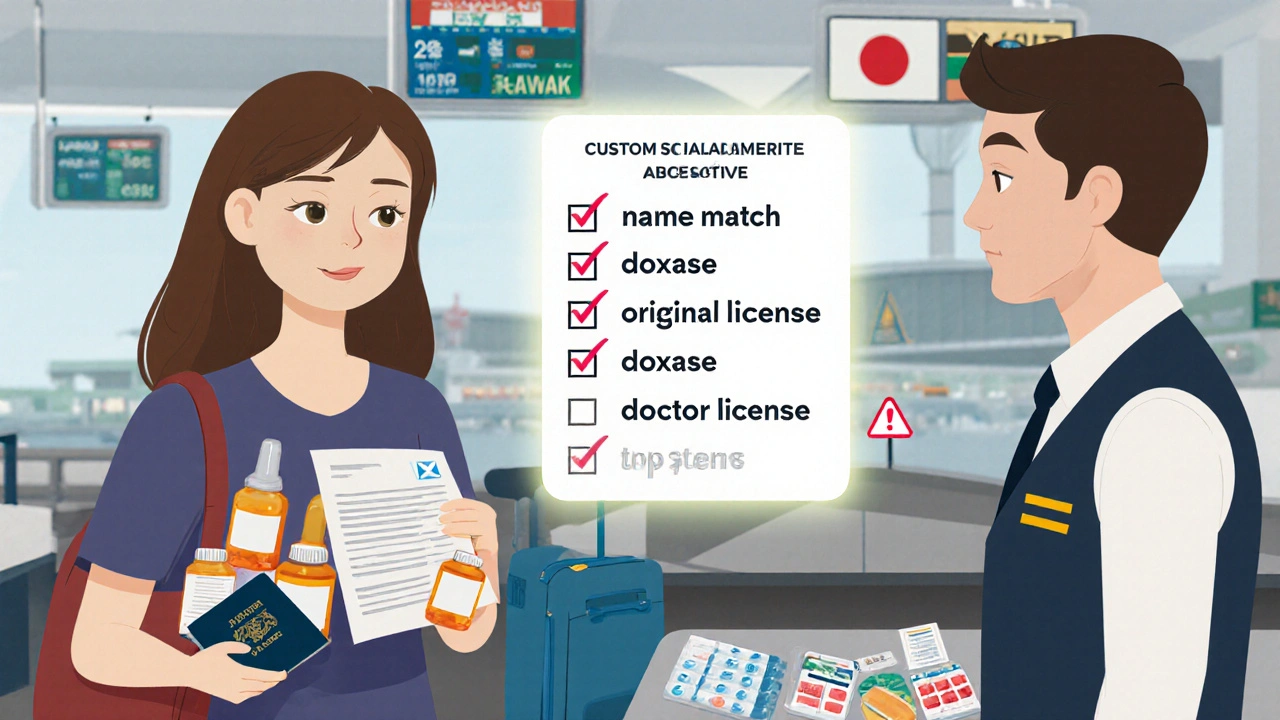Customs Drug Letter: What You Need to Know Before Shipping Medications
When you're sending prescription drugs across borders, a customs drug letter, a formal document from a licensed doctor or pharmacy that verifies the legitimacy of medications being shipped. Also known as prescription verification letter, it's often the only thing that keeps your package from being seized at the border. Without it, even legal medications like insulin, antidepressants, or painkillers can vanish in customs—no warning, no refund.
This isn’t just about paperwork. Countries like the U.S., Canada, Australia, and the U.K. have strict rules: you can’t mail controlled substances without proof they’re for personal use, prescribed by a licensed provider, and not for resale. The customs drug letter, a formal document from a licensed doctor or pharmacy that verifies the legitimacy of medications being shipped. Also known as prescription verification letter, it's often the only thing that keeps your package from being seized at the border. must include your full name, address, the drug’s generic and brand name, dosage, quantity, prescribing doctor’s details, and a statement confirming it’s for personal use. Some countries also require the letter to be on official letterhead, signed, and dated within the last 30 days.
It’s not just about the letter, though. You also need to know what drugs are even allowed in. For example, the U.S. FDA blocks shipments of unapproved drugs—even if they’re legal where you bought them. Medications like certain ADHD pills, weight-loss drugs, or strong painkillers often trigger red flags. Meanwhile, countries like Japan ban even common OTC meds like pseudoephedrine. The pharmaceutical import rules, regulations set by national agencies that control which medications can enter the country and under what conditions vary wildly, and ignoring them can mean fines, confiscation, or worse.
People often think if they’re carrying meds in their suitcase, they’re fine. But mailing them? That’s a different ballgame. Customs officers don’t care if you’ve used the drug for years. They care about documentation. A doctor’s note on plain paper won’t cut it. You need a letter that looks official, matches your prescription, and answers every question they might have. Many pharmacies that ship internationally will prepare this for you—but not all do. If you’re buying from a foreign online pharmacy, ask upfront: "Will you provide a customs drug letter?" If they hesitate, walk away.
And don’t assume your insurance or local pharmacy will help. Most won’t. You’re on your own. That’s why so many people end up stranded abroad without meds, or stuck waiting weeks for a seized package to be released—if it ever is. The border drug inspection, the process by which customs authorities examine packages for unauthorized or unverified pharmaceuticals is getting smarter. X-rays, AI scanners, and international databases now flag suspicious shipments faster than ever.
What you’ll find below are real, practical guides based on actual cases: how to write a customs drug letter that works, which countries require it, what to do if your package gets held, and which medications are safest to ship. No fluff. No theory. Just what you need to know before you click "send."

Travel Letters for Controlled Medications: Airport and Customs Tips
Learn how to travel safely with controlled medications. Get the exact documents you need, avoid customs seizures, and know which countries ban your prescriptions-so you don’t get detained at the airport.
October 28 2025